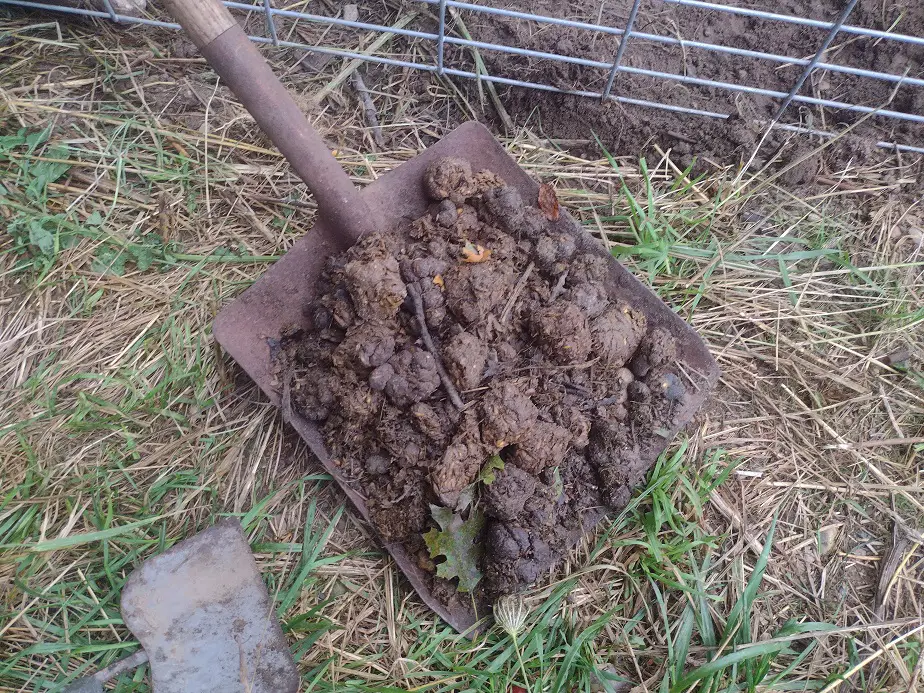Manure is the primary fertilizer we use on our farm. I will say, most people don’t know how to use it.
Manure does not need aging or composting before being used as a fertilizer. As it ages, valuable nutrients are lost. Manure is often applied fresh in fields in order to get the most use out of it. Composted or aged manure is beneficial, but often devoid of primary fertility compounds.
Manure is the pinnacle of a self-sufficient farm, if used right. There are some common myths out there about it.
Why Manure Shouldn’t be Aged or Composted
It’s common to hear “manure has to be aged at least a year” from random people in homesteading groups. I think that’s funny as I collect my fresh manure and apply it to the crops.
To think that all these people are so very eager to share their opinions on the dangers of fresh manure because it’s “too hot” or “has too much Nitrogen” and us farmers are out here trying to figure out how to apply it as fresh and as soon as possible to utilize all that nitrogen.
There is, I think a combination of ridiculous fears and misunderstandings. I fertilize with fresh manures. I amend the soil with fresh manures, and I sometimes mulch garden plants with manure. It all comes down to this: Know what’s in your manure and apply it accordingly.
Every manure is different. Some are stronger than others. Manure does contain the same fertility compounds as synthetic fertilizer but at a lower rate. So, for starters, let’s look at a generic table of manure NPK.
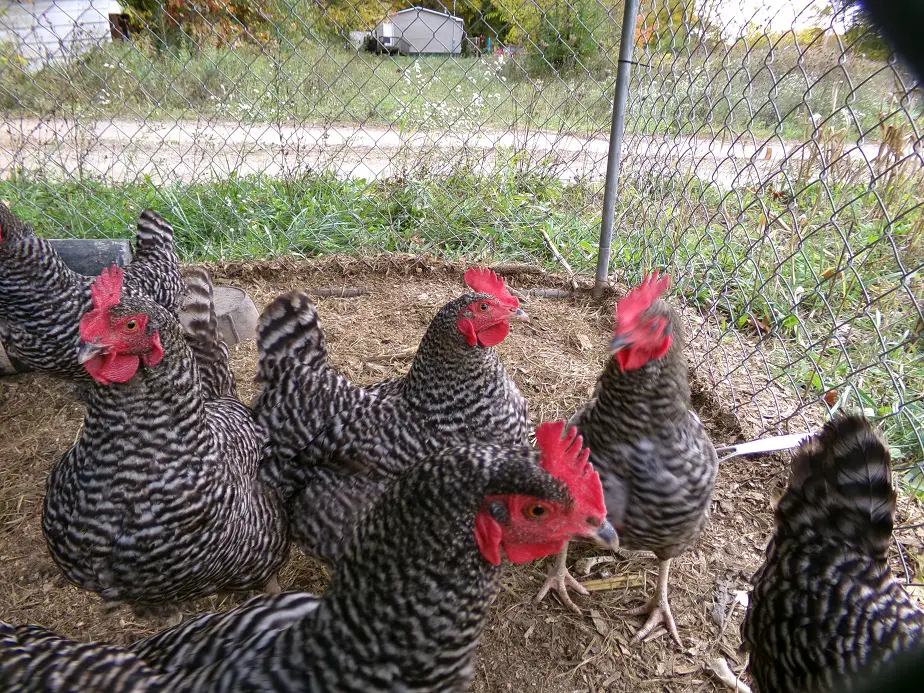
- Meat chicken manure (commercial): 3.1-1.4-1.7
- Laying chicken manure(commercial) : 2-1-0.9
- Dairy cow manure (commercial) : 0.7-0.2-0.6
- Horse manure: 0.7-0.1-0.4
- Rabbit manure: 2-1-0.7
The NPK is the percentage of Nitrogen, Phosphorus, and Potassium on a dry matter basis by weight. That’s how all fertilizers are measured. Most all the N,P, and K are in the form of ionic substances. That means it’s technically a salt. All legitimate fertilizers are technically salts.
Now, what does salt do with water? It tends to attract it. So, by putting down an excess of fertilizer of any form, you can actually draw moisture out of the plant via its roots, mimicking a type of drought stress. That’s often called fertilizer burn.
With manures, it takes a large amount to be able to cause a problem. The manure would have to be piled deep, quite fresh and strong, and quite dry so it absorbs water.
because there’s not a ton of fertility on manures compared to fertilizers, we try to preserve fertility as much as possible. The Nitrogen and Potassium in manures will wash out with rain pretty easily. So will its Magnesium, which is needed in pretty high amounts by most plants.
The Nitrogen tends to gas out, forming an ammonia nitrate and evaporating away. That’s the ammonia smell you may notice around manure. It’s fertility evaporating. It’s compounded by heat and sun exposure. You can lose 90 percent of the nitrogen from a small pile of manure in a few days of hot sun exposure.
So, that pile of horse manure in your barn that sat for a week before being scooped out and has been in a pile for a month, It’s not strong. Even the famed chicken manure (only about 3 percent nitrogen) loses its strength quite fast.

Will Manure Burn Plants?
Some manures can burn some plants, but it’s easily avoided by applying in appropriate amounts, watering after applying and applying between growing rows instead of right under plants. Apply manures based on the estimated Nitrogen content as noted in the chart below.
How much manure to apply in order to add the average recommended 50 lbs. of nitrogen per acre (1 pound per thousand square feet), per year.
| *heaping full | Manures with about 1 percent nitrogen | Manures with about 2 percent nitrogen | Manures with about 3 percent nitrogen |
| For 100 square feet | half of a 5-gallon bucket | 1-gallon | 1/2 gallon |
| For 1,000 square feet | 5 5-gallon buckets/ 1/2 wheelbarrow* | 2.5 5-gallon buckets/ 1 wheelbarrow* | 2, 5-gallon buckets/ most of a wheelbarrow* |
| For an acre | 200 5-gallon buckets/ 20 wheelbarrows*/ 37 yards | 100 5-gallon buckets/ 10 wheelbarrows*/ 18 yards | 66 5-gallon buckets/ 6 wheelbarrows*/ 12 yards |
Commercial manure tends to be quite a bit stronger than manure from small farms and homesteads. They don’t use nearly as much bedding materials in it as we tend to. Instead, they try to capture manure as pure and undiluted as possible for the maximum field benefits and maximum value.
Some plants are quite tender and a stronger manure, or any fertilizer, could cause fertilizer burn or plant stress to them. I would say that everything is susceptible to some fertilizer damage when quite young. Tender plants like leaf lettuce, can burn easily in the normal eating stage.
But, any plant that’s more mature and robust would do alright with some level of fresh to semi-fresh manure. There is a level of cleanliness to be considered. I’ve read accounts of old-time farmers collecting liquid manure slurry from barns and fertilizing produce with it through the growing season.
You probably shouldn’t use a manure that will splash around and contact the produce you are going to pick. For low-growing produce, I personally practice a 60-day minimum period between applying fresh manure and harvesting produce. For root crops, it’s closer to 90 days.
I believe the USDA recommends a 115-day waiting period between fertilizing produce with fresh manure and harvesting. Keep in mind that I run my animals much cleaner and with less disease and E. coli than most commercial operations.
For produce that grows more than about 2 feet off the ground like my trellised cucumbers, caged tomatoes, and corn; I don’t really concern much about a waiting period.
A fresh manure can be a fine boost to an indeterminate tomato plant midway through the growing season, provided the fruits are 2 feet or more above the soil. Just don’t pile it too deep, and perhaps not right against the plant.
When I apply fresh manure, I water it into the soil or try and get it out right before a rain. That will allow the nutrients to steep into the soil where it can be preserved and utilized.
If you want to read more, Check out this article: Will Manure Burn Plants (expert advice and tips)
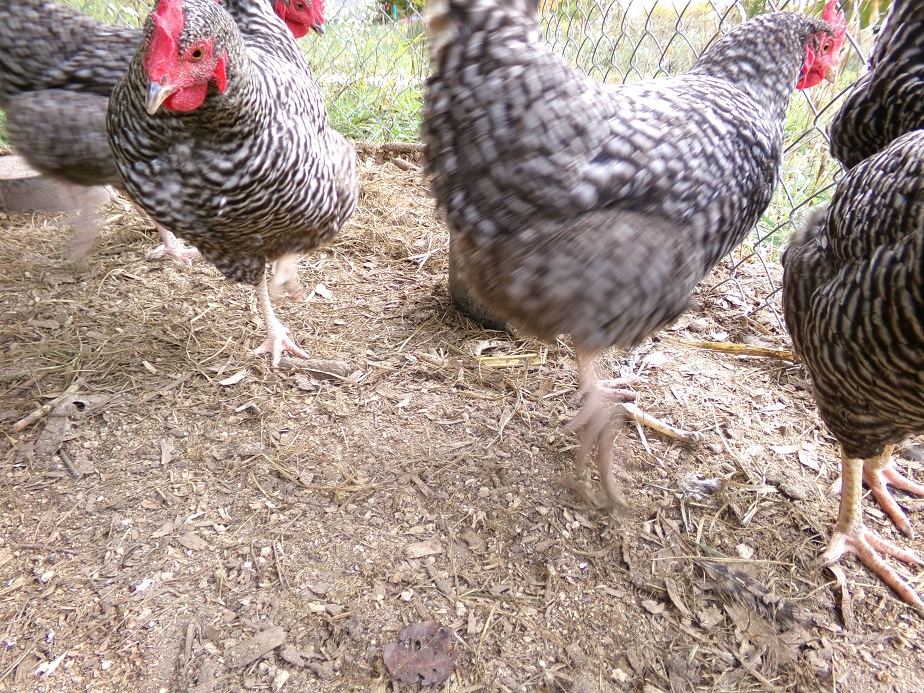
Should Chicken Manure be Aged?
Chicken manure does not need to be aged and is not very high in nitrogen compared to regular fertilizers, but it can be easy to over-apply it to the point of damaging growing plants. Chicken manure should be applied quite thin, and then watered in so it can dissipate into the soil.
You may need to break it up before applying. The issue with chicken manure is that it’s usually filled with straw and comes in big chunks. Those large chunks, if potent, are just too much in one spot.
I fill my wheelbarrow with chicken manure and break it up with my garden fork before sprinkling it around, then I turn the sprinklers on to water it in.
Now, about chicken manure being “too hot” or having “too much nitrogen”, how much does it really have? The strongest chicken manure products have a nitrogen content between 3 and 5 percent. That’s if collected the same day and only stored briefly in a nitrogen-containing manner.
How often is your chicken coop cleaned out? Manure can lose 90 percent of its nitrogen in a few hot summer days. How much straw is in it? Straw has virtually no nitrogen in it and really waters down the manure. Most folk’s chicken manure, in my opinion, is closer to 2 percent nitrogen. That’s hardly fertilizer.
Still, too much of it is too much. Spread it thin. Use a garden fork, hoe, or rake to break it up. For larger operations, any light between-row cultivation would do the job. and, when applying any fertilizer, water it in a bit.
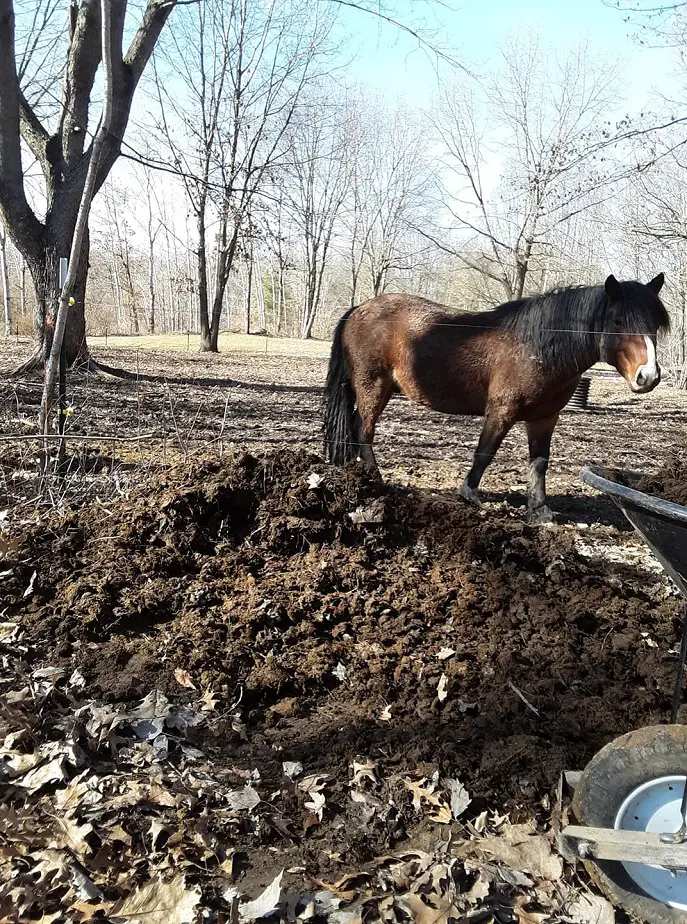
When Manure Should Be Aged?
Manure should be aged whenever you have manure and no safe or functional way to utilize it right away. Aging manure should be done under shade and out of the rain. manure can be collected and stored under a lean-to or piled out of the sun and covered with a tarp to keep the rain off.
Sun and rain are the worst enemies of aged manure. They both accelerate the rate of nutrient loss. Over time a significant amount can be lost by soil content by slowly leaching, and by being carried into the soil by worms and bugs.
I age manure when it’s going to be impractical to use it immediately, or in the case of my pig manure, if it just stinks too much. This year I have piled up my pig manure. I didn’t have any plants that needed it, and would also be safe to apply fresh manure to at the time. In that case, I better save it as best I can.
I did use most of my rabbit manure fairly fresh, just because it’s cleaner and it spreads out so thin and evenly. These days I tend to use a deep litter system for our chickens, so we don’t really get fresh manure anymore from them. It’s all aged by the time the coops are cleaned, every two months or so.
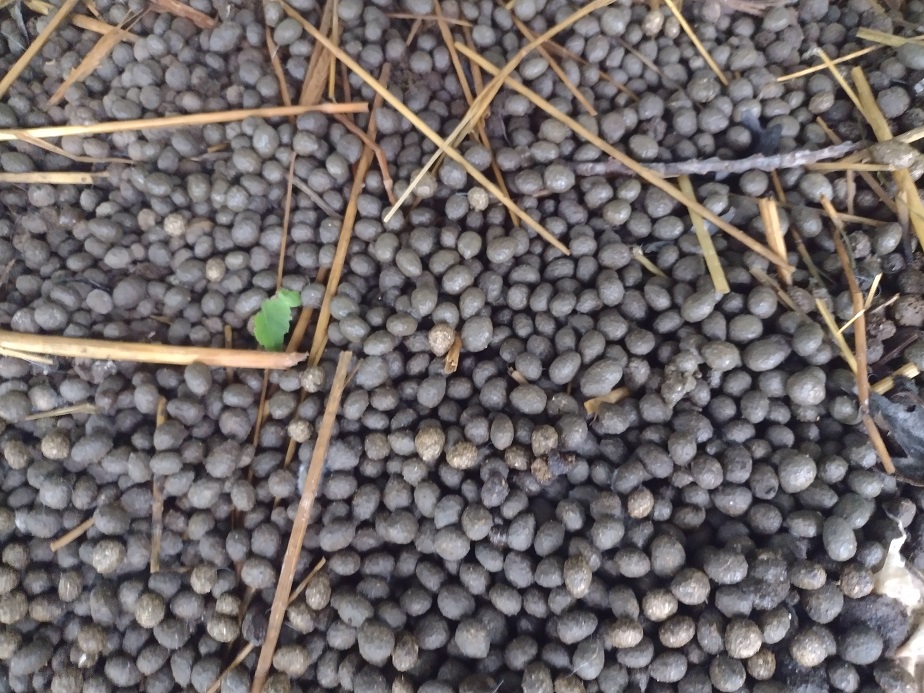
When Manure Should Be Composted?
Manure should be composted when you want it in a finer consistency to blend into the soil. composted manure allows for a better tilth and more even seeding by a mechanical seeder. Manure chunks can block young seedlings from emerging but composted manure adds a nice fluff which benefits seedlings.
You can’t run a seeder through my soil very well if there are large chunks of horse or cow manure. You have to allow the manure enough time to break down first. It could be composted on its own, or added to the soil in the fall to break down naturally before a spring planting.
I like to apply a lot in the fall. It’s all mostly composted and really fluffs the soil by spring. Rototilling in chunky manure in the spring can work, but it’s certainly not the best option. If your manure has straw in it, that will really clog up most types of seeders. let it break down either before or after applying it, well ahead of seeding time.
Even if you are not using a mechanical seeder but you are growing Carrots then you should consider composting manure first. Carrots, don’t grow well if they have chunky soil.
I do sometimes apply manure, then rake my planting rows open to seed the soil. Or, apply it between rows after the seedlings emerge. Manure can work great as a side dressing. That is, applied between rows of growing plants.
Here’s a related article you might be interested in: Compost Tea vs Fertilizer (how they work and which to choose)
Using Manure Tea
One way to get the nutrition from manure is by making a manure tea. Any chunky manure works. Just fill a bucket 1/4 with manure and top it with water. after a few hours, pour it off and use it as a light fertility boost. It will work right into the soil and will not alter the tilth or texture of your soil.
I make a lot of manure tea for use during the growing season. It makes a noticeable difference to my plants and unlike compost tea, it is considered a fertilizer application.
Related Articles:

